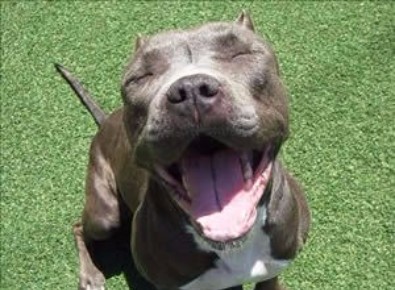Even before my father became an alcoholic and my family fell apart, I’d always been a sensitive and emotional girl. I can remember crying for the trees thrashing in the wind during a hurricane, and falling apart into hysterics when I accidentally stepped on an ant. When we found my sister’s goldfish, Pumpkin, floating belly-up in his fish bowl, we placed him in a velvet box and buried him in the woods. But unlike my sister, who eventually moved on, I went to Pumpkin’s grave at least once a week for the following year, and every time I thought about his beautiful orange scales and tiny fins, the tears came pouring down.
Years before I developed bulimia in my late teens, I made an unconscious decision that feeling was the enemy. I was embarrassed about how much I cried during Disney movies, about how much emotion I felt for an insect the size of my fingernail, and later, about the way my father’s descent into alcoholism tore up my heart.
In high school, I began trying to think my way out of the pain and the grief, reasoning that my father wasn’t physically dead, just drunk and missing most of the time. There were girls who lost their dads for real. Heart attacks. Cancer. Strokes. Car accidents. I’d think about these girls haunted by funerals and ashes and all the people who didn’t know what to say or said the wrong things, and I’d think Now, that is awful. Mind-blowingly, gut-wrenchingly awful. I told myself what I was dealing with was nothing.
But emotion–that pulsating heart energy–demands to be felt. And when I couldn’t rationalize or dismiss the feeling away, I began turning to bulimia to cope. Stuffing down my pain along with calories and then emptying it all out.
At times purging felt cathartic, both on a physical and emotional level. But I was not releasing emotions of course–I was violently forcing up food and water out of my body. Sometimes, hunched over the toilet, my stomach still in spasms from retching, I experienced a numbing kind quiet, a lucid, single-minded state. But that numbness was always all-too-brief, and followed by severe consequences (immense shame, guilt, and depression… not to mention bloodshot eyes, a raw throat, and eroded teeth).
The eating disorder intensified over a period of eight years, and at twenty-two, I grew so sick that I needed to be hospitalized in a rehab center in the middle of the Arizona desert. Even there, I struggled to access my inner-truth, the fact that I was hurting and terrified of feeling that hurt.

Be it amnesia or a very strong ego, I somehow managed to wake up most mornings (even in rehab!) with the belief that I was not that bad. I put on my preppy clothes and shoes. Put on my sweet appearance and good-girl personality. Put on my denial and delusion.
How badly I wanted to be “normal.” How intensely I feared being labeled “sick” and “out of control” like my father. So many therapists and doctors and friends and family tried to help me, but I could not be honest. I craved their smiles and nods of approval. I sought to please the audience rather than my very own heart.
But that’s where the most important healing happens. Deep down in our tender hearts. Beyond mental concepts and words. Beyond ego and pride.
We heal from the center of our being–out.
It wasn’t until I began working at the San Diego Humane Society at twenty-four, that a vital and transformative heart-healing took place. In dirty kennels and tiny rooms, the nonjudgmental presence of a shelter dog could calm my breath and my mind. I discovered I could wrap my arms around a big mutt who considered herself a lap dog, and hold onto her like an anchor. Waves of emotion would pass through me, and as I cried, my dark thoughts softened and receded.
With the dogs, I could show up sick and shattered and full of wanting. I didn’t have to look good or know the answers or be brave. I didn’t have to explain in words what I felt. I could be my real, scared tender self. I could be that sensitive child again who felt everything.

So often, a dog’s ability to be present rubbed off on me, and my awareness sharpened to the moment. To an outpouring of love between two lonely creatures. To the strong, sturdy presence of another. To the breath moving in and out of a dog’s chest. To the beating of her heart. To the force of life moving through her and through me.
Today, it has been almost seven years since I binged or purged, and shelter animals continue to play an important role in my recovery. Not too long ago, at a rundown shelter in Los Angeles, I met a an oreo-colored pit bull mix who looked a bit like Petey on The Little Rascals. We didn’t spend a lot of time together, and outwardly, it may have appeared like we were going on a walk or playing with a tennis ball, or sitting in a kennel. But what we were really doing was opening our hearts to each other, and I found her heart to be as sacred as a quiet prayer. She loved so easily, even in this cruel world. And the simplest things–a warm touch, the sound of her name, grass beneath her paws–lit her up on the inside.
When I found out that she hadn’t survived–that she had been euthanized–I cried for a long while in the employee bathroom. I cried so hard that one staff member came up to me and questioned if I had it in me to “do this work.”
I didn’t have words right then.
But now, I know that feeling deeply is a sign of strength, not weakness.
And loving deeply is what we are here for, not numbness.
And even when it hurts, love is a kind of medicine.
We need it in many doses.
Copyright 2016 Shannon Kopp, author of Pound for Pound: A Story of One Woman’s Recovery and the Shelter Dogs Who Loved Her Back to Life
EDITOR’S NOTE: There has been a lot of research about how animals can help make us healthy or healthier. For more information, check out this article: Pet Therapy: How Animals and Humans Heal Each Other
